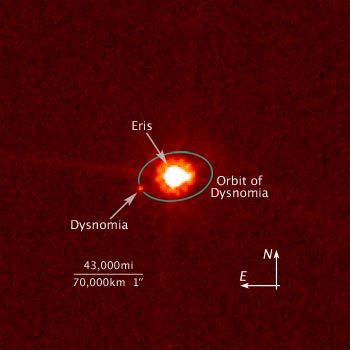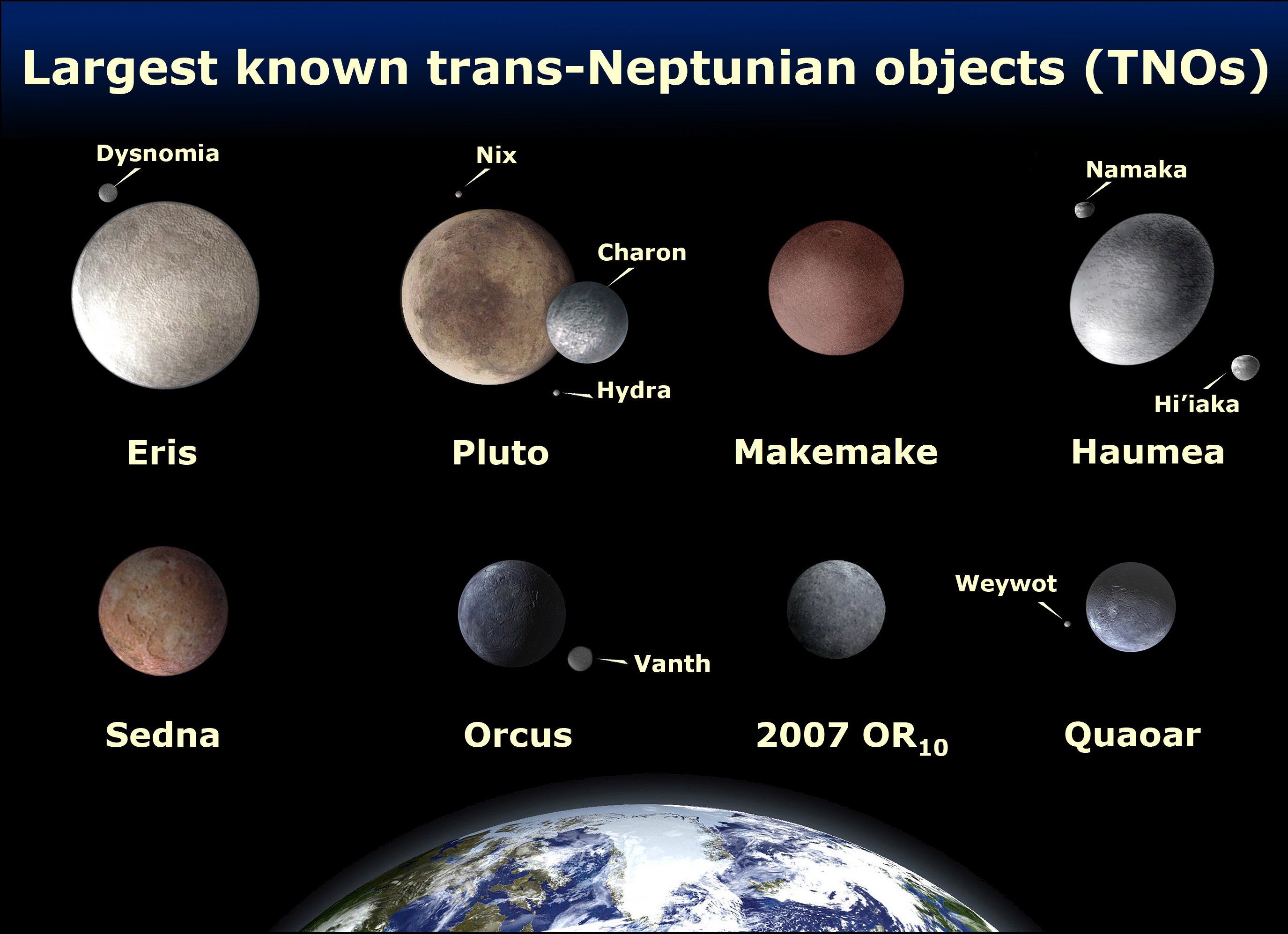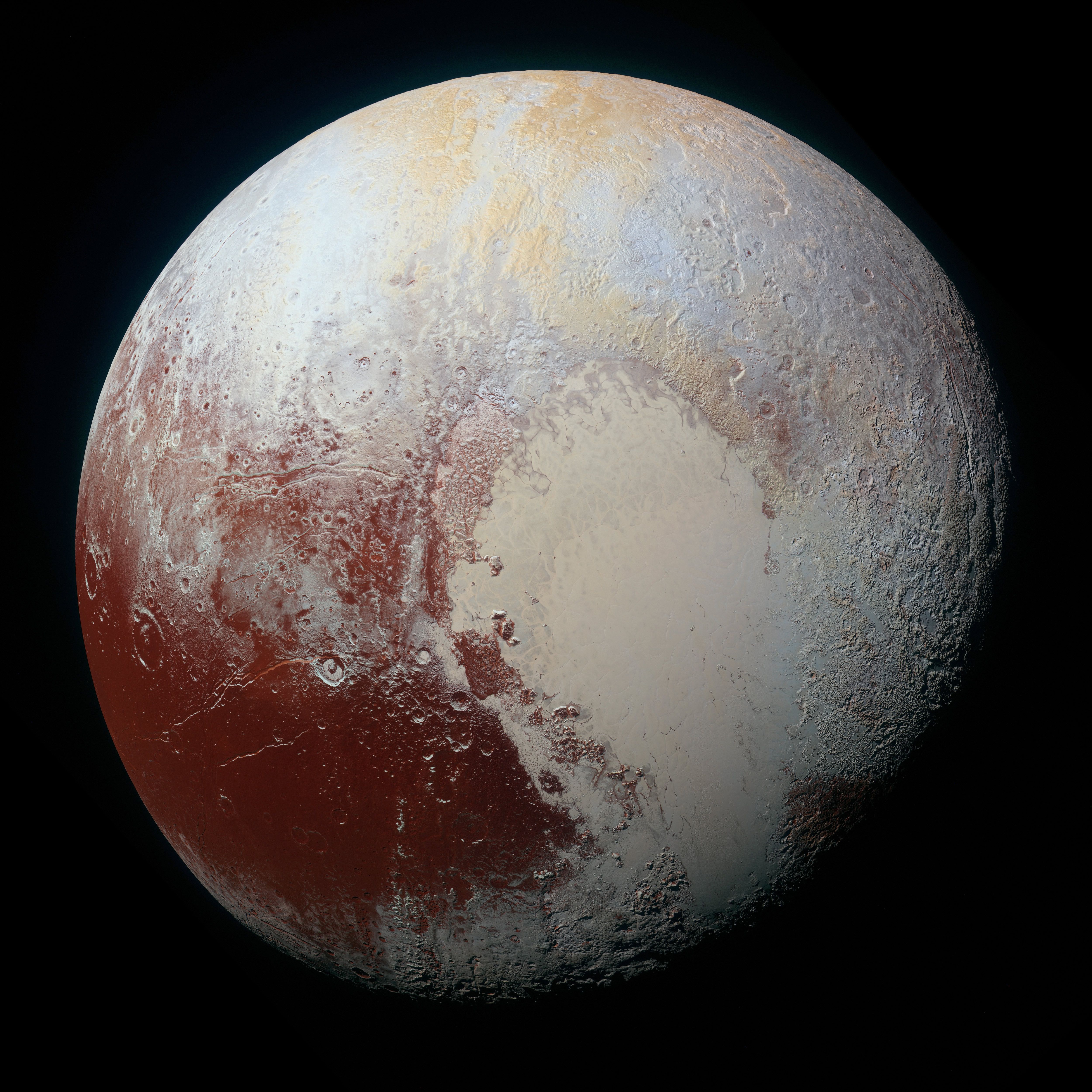Pluto & Kuiper Belt
Pluto & Kuiper Belt
The Kuiper Belt is a flattened region at the edge of the Solar System. It is home to many rocky and icy bodies, called Kuiper Belt Objects (KBOs), left over as the Solar System formed. It is the location of Pluto, and many other dwarf planets, such as Haumea and Makemake.

Credit:(NASA/ESA/M. Brown)
These, and dwarf planet candidates Orcus and Quaoar, all cross the orbit of Neptune and are classified as Trans-Neptunian Objects (TNOs). Beyond the outermost Kuiper Belt is the scattered disk, home to many more TNOs, comets and other objects, including dwarf planet Eris and TNO Sedna.
This is the most detailed view to date of the entire surface of the dwarf planet Pluto, as constructed from multiple NASA Hubble Space Telescope photographs taken from 2002 to 2003.
Credit:(NASA/ESA/M. Buie)

Credit:(NASA/STSci)

Credit:(NASA/Johns Hopkins University Applied Physics Laboratory/Southwest Research Institute)

Credit:(NASA/Johns Hopkins University Applied Physics Laboratory/Southwest Research Institute)
For the latest news and pictures, see the New Horizons website
http://pluto.jhuapl.edu/
Fun Facts
- Pluto was discovered in 1930 and named by English schoolgirl Venetia Burney
- Most of the largest KBOs have moons:
Pluto - Charon, Nix, Hydra, Styx, Kerberos
Eris - Dysnomia
Haumea - Namaka, Hi'iaka
Orcus - Vanth
- Eris may be larger than Pluto
Missions
New Horizons: Pluto flyby in 2015, Kuiper Belt Object(s) in 2016-2020
